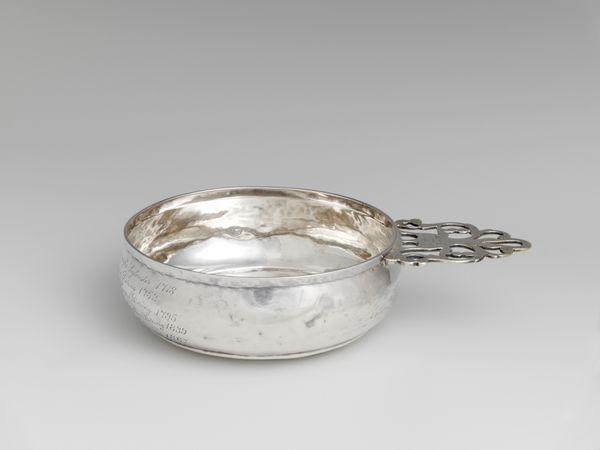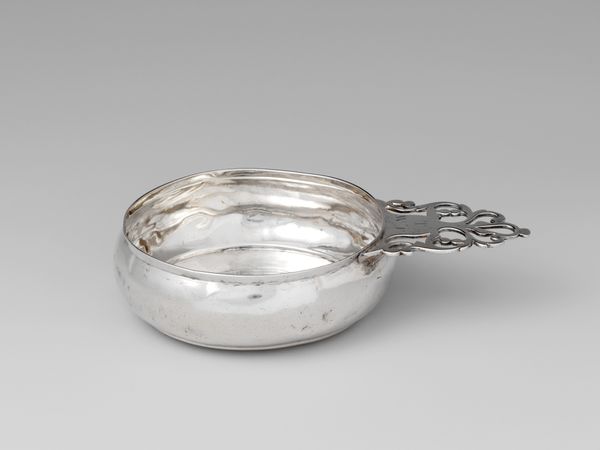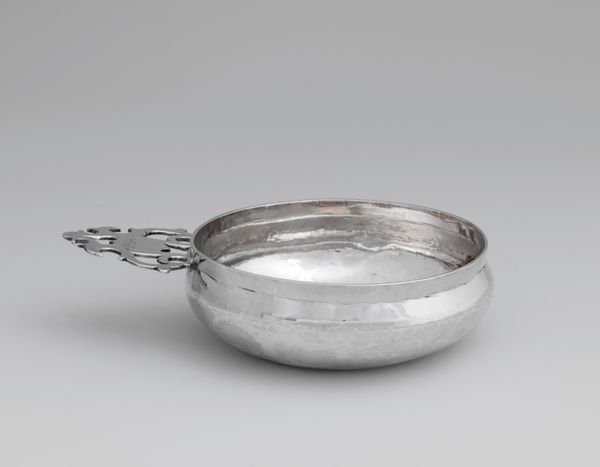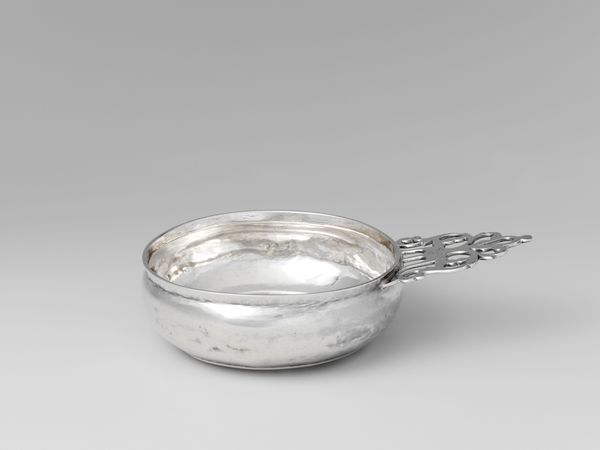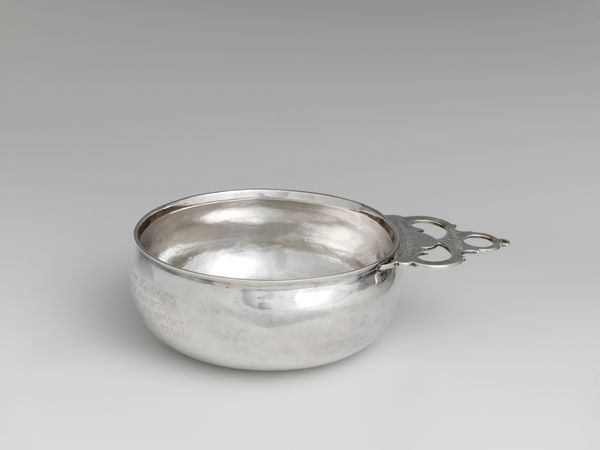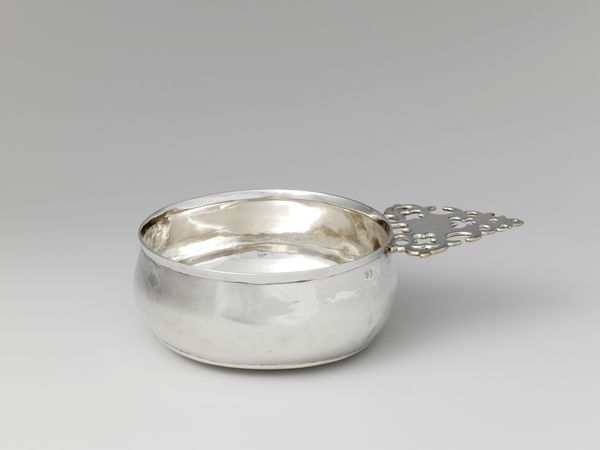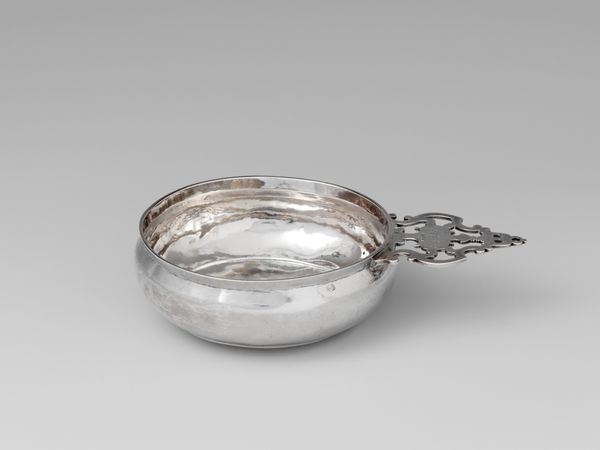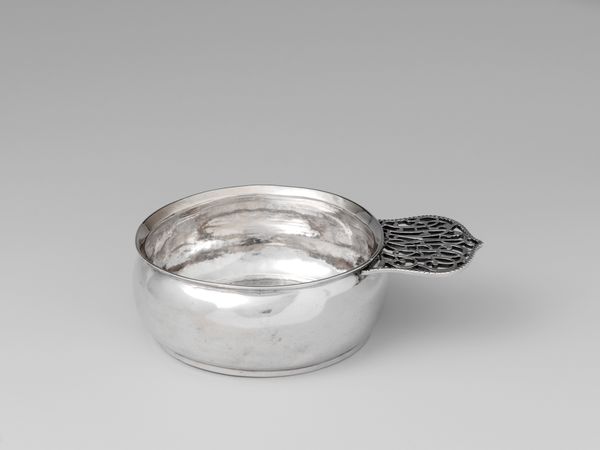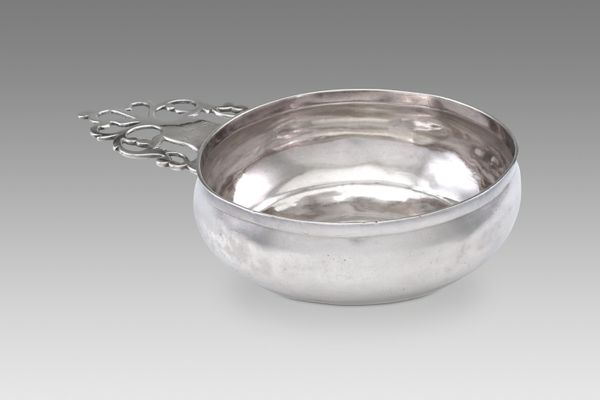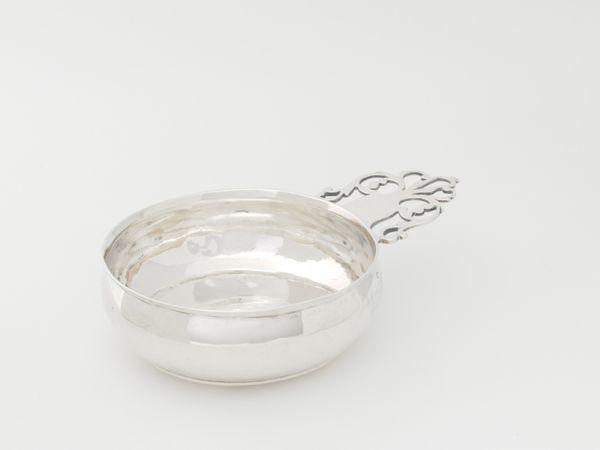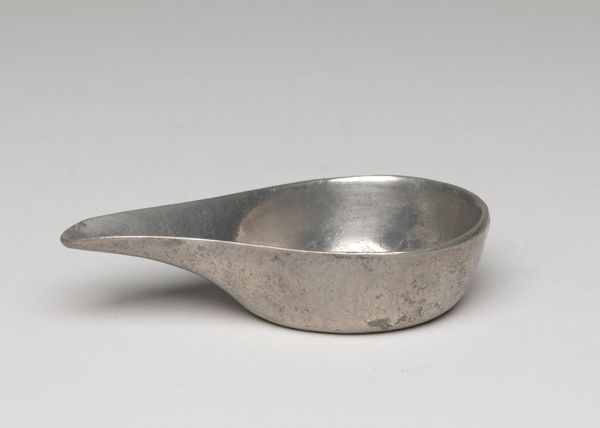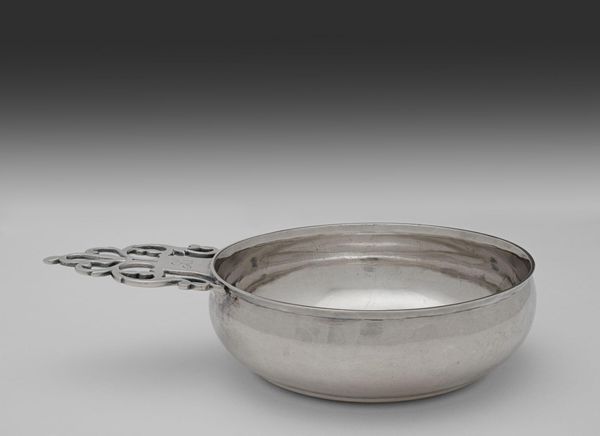
silver, metal
#
silver
#
metal
#
united-states
#
decorative-art
Dimensions: Overall: 2 x 8 1/8 in. (5.1 x 20.6 cm); 8 oz. 19 dwt. (277.6 g) Lip: Diam. 5 1/2 in. (14 cm) Body: Diam. 5 1/2 in. (14 cm)
Copyright: Public Domain
This is a silver porringer, made by Benjamin Brenton, a silversmith active in Newport, Rhode Island, in the mid-18th century. The porringer, a small, shallow bowl with a handle, was a common household item in colonial America. Silver examples, like this one, reflect the growing wealth and refinement of the merchant class in port cities like Newport. Note the simple, elegant design, and the subtle hammering marks on the surface. These details speak to the skill of the craftsman and the value placed on handcrafted goods. Newport was a major center for the transatlantic slave trade, and the wealth that supported artisans like Brenton was directly tied to this brutal system. We can research probate inventories, merchant records, and other archival documents to trace the connections between the production of luxury goods and the exploitation of enslaved people. By examining these historical relationships, we can better understand the complex social conditions that shaped artistic production in colonial America.
Comments
No comments
Be the first to comment and join the conversation on the ultimate creative platform.
